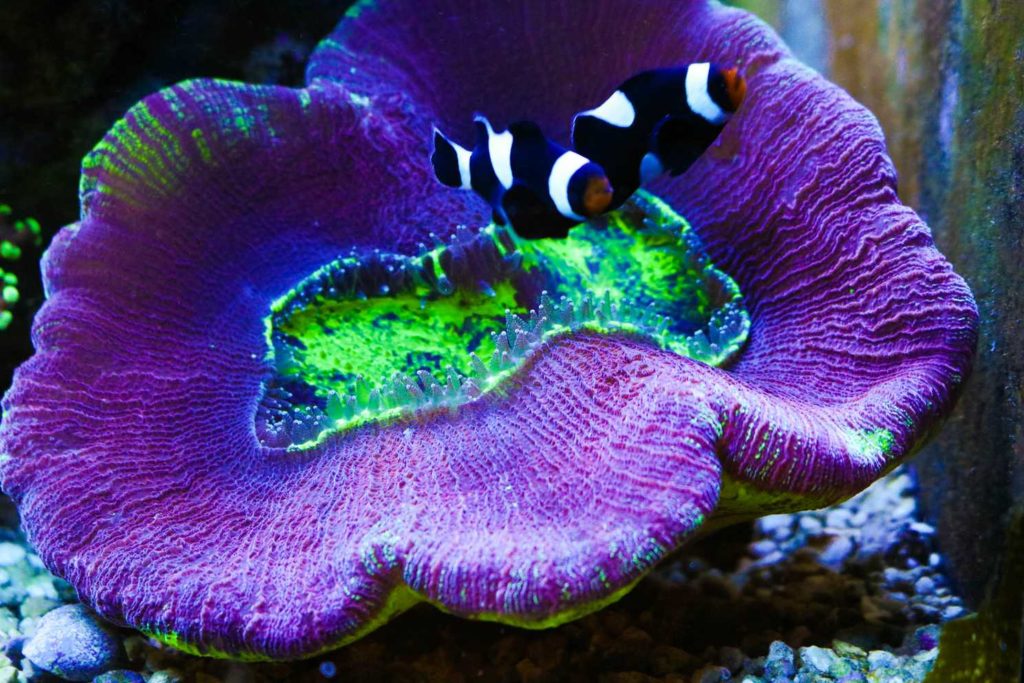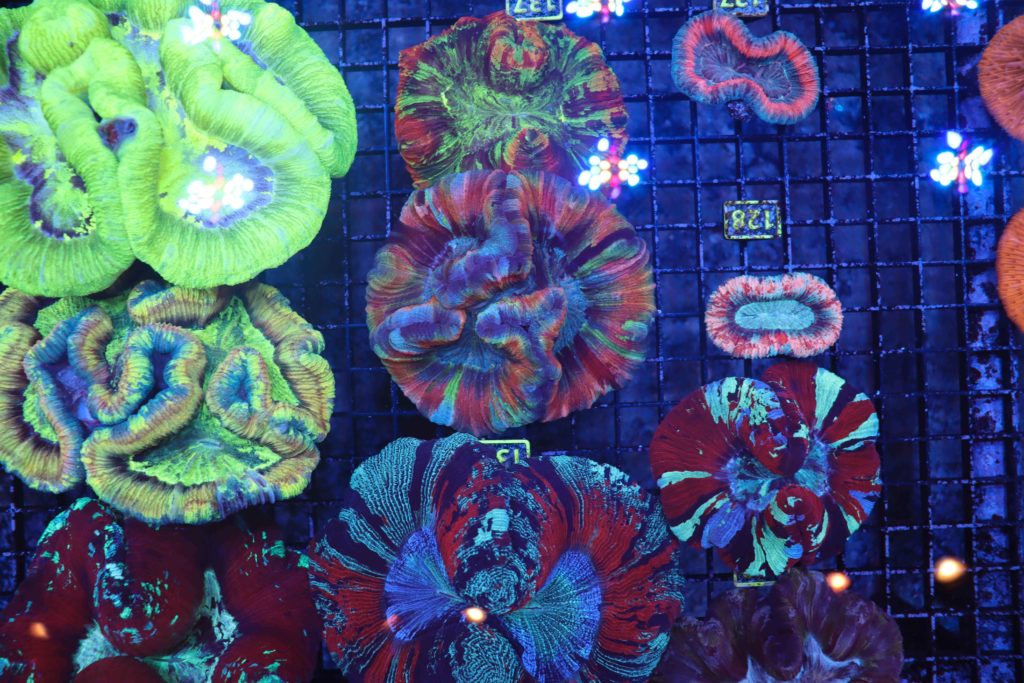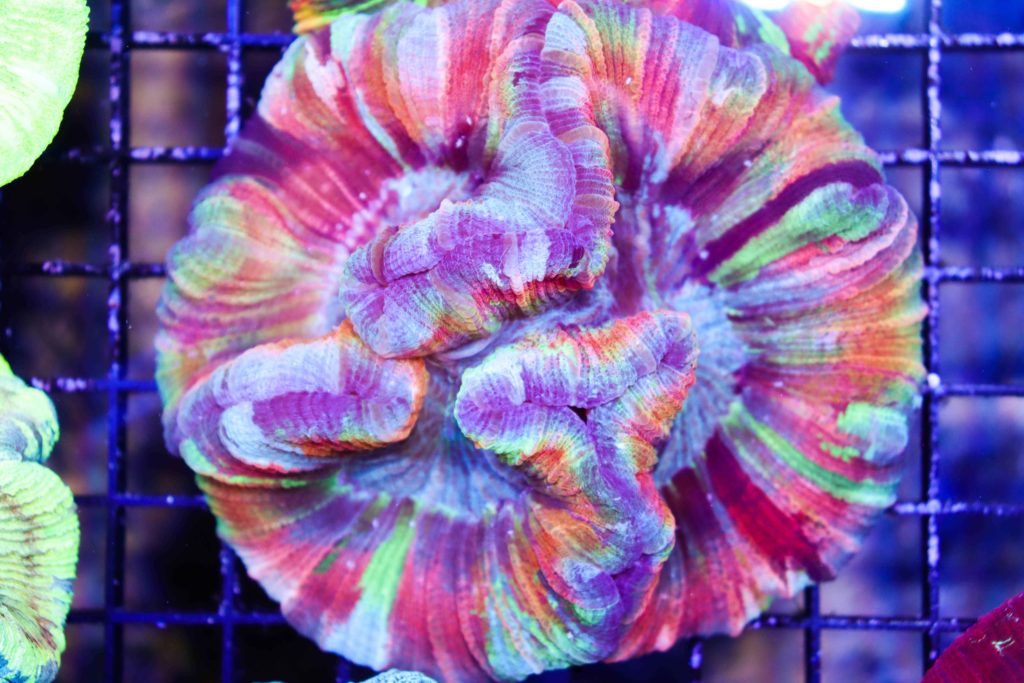 Common Name: Open Brain Coral
Common Name: Open Brain Coral
Order: Scleractinia
Latin Name: Trachyphyllia geoffroyi
Class: Anthozoa
Family: Merulinidae
Origin: Indo-pacific, Australia, Vietnam
Category: LPS
Care Level: Beginner
Temperament: Peaceful
Lighting: Low-Medium
Waterflow: Low-Medium
Placement: Sandbed
Colors: Various
Growth Speed: Slow
What Are Open Brain Corals ?
Trachyphyllia geoffroyi are commonly found large polyp stony coral we normally to refer to as Open Brain. They are one of the most popular LPS corals in home aquariums and are great for both beginners and advanced reef hobbyists. These corals occur as solitary singular corals unlike many coral that grow as colonies. They usually have a single mouth and grow to resemble a brain. They are a free living coral and can inflate their bodies to move around and even flip themselves over with the help of the water current. In you aquarium though movement is very limited and they generally stay put. The nicest ones in the world are found in Vietnam and east coast of Australia.
Open Brain Placement
Brains do best on the sand bed under par of about 100. You can place them on low rock work as well if it is flat and there is no chance of it falling over. You should not glue the bottom of open brain corals as this can kill them. They don’t have a sting but they should not be placed directly in contact with any other corals. They do well under low to medium flow, you want to give them enough to keep their bodies clean of detritus but not so much that they risk flipping over as they can not flip them selves back and this will kill them in a few days.
Open Brain Names
Unlike many other corals open brain corals do not normally have trade names, we simply refer to them as open brain corals. Or sometimes the color used to described them as well as terms like ultra and rainbow to distinguish the grade.
 Color & Size
Color & Size
Open Brain corals normally arrive to our store 1-4”. In the wild they can grow up to 12” across ! This is rare in captivity and would take almost a decade to accomplish. Green open brain corals are the most common in color and red are the most sought after. Orange varieties are extremely rare and when you have a open brain with different occurring colors it usually makes them more valuable because of their rarity. Three or more colors are considered rainbows and are highly sought after show pieces.
Feeding
In addition to photosynthesis, these corals are have feeders that can consume a wide variety of foods. They will eat just about all foods they are given and love it. They put on dramatic feeding displays and it can be so much to watch them eat. They pull food into their mouth and devour it. A well fed Trachy is a happy one. They will show off their tentacles for often when they are fed regularly. If they are overfed they will simply spit it back out, its wasteful and just adding waste to your tank. We recommend target feeding with your flow off. First feed your fish and inverts so they don’t bother it and turn you flow off for 5-10 minutes. Distraction is key to allow the coral time to eat unmolested from other tank inhabitants.
 Water Chemistry
Water Chemistry
These corals are tolerant of higher than ideal phosphate and nitrate levels, this is what makes them easy to keep. We always recommend keeping your aquarium within natural sea water parameters. This means salinity of about 1.026, calcium 450ppm , alkalinity of about 8 , magnesium 1400.
Dipping Open Brain Corals
Thankfully these corals to not struggle with pests but its always good practice to dip them with coral rx or two little fishies revive coral dip before adding them your aquarium. You really should dip any corals you add to your tank.
Check out this video on how to dip corals
Growth & Fragging
Open Brain Corals don’t grow very fast compared to most lps corals and corals in general. This is kind of a good thing because once they are large they do take up quiet a bit of space and they can not be fragged
Special Care
Open Brain corals are generally easy to care for and have so special care requirements. All species are photosynethic.
